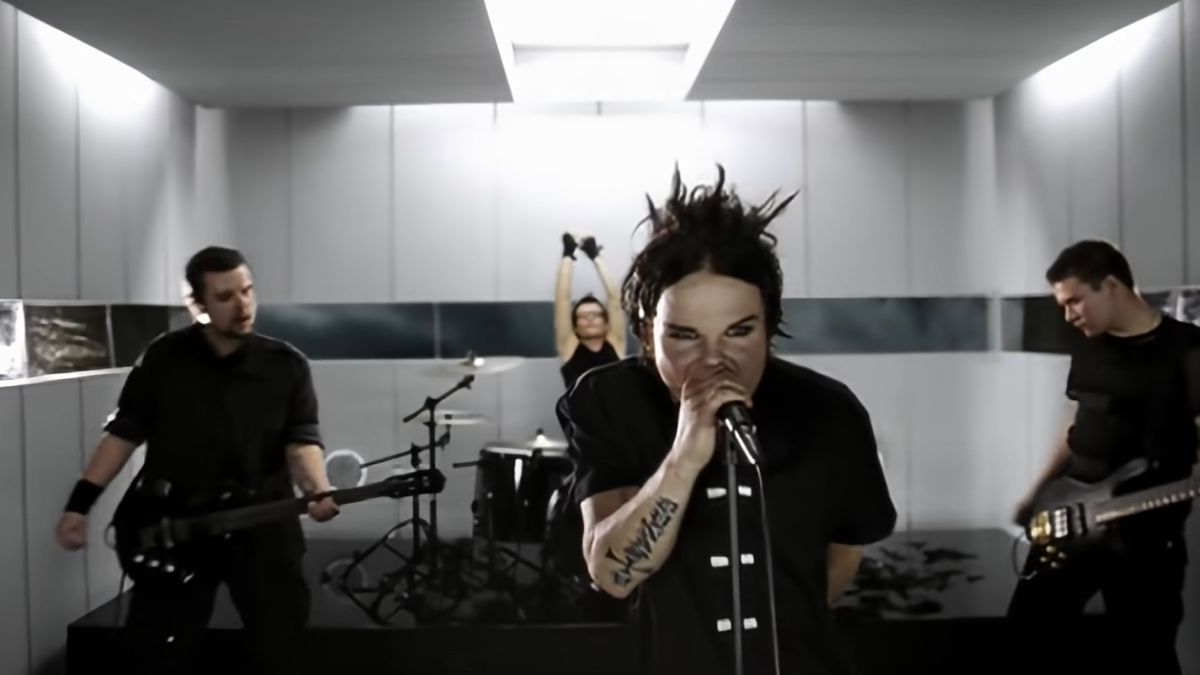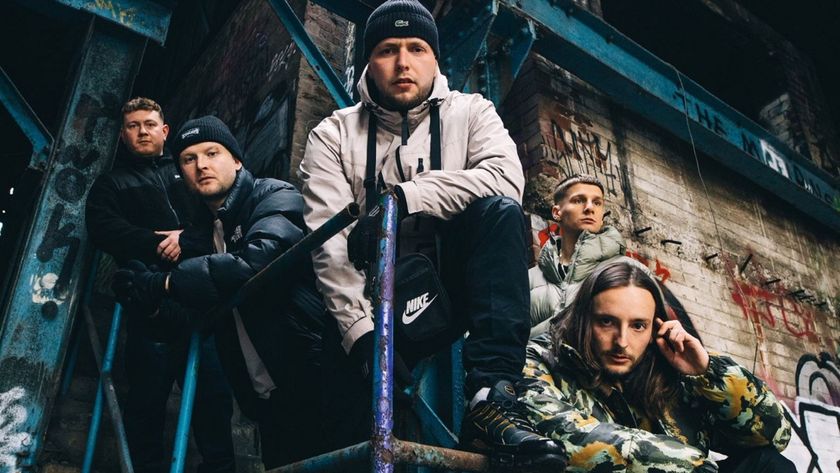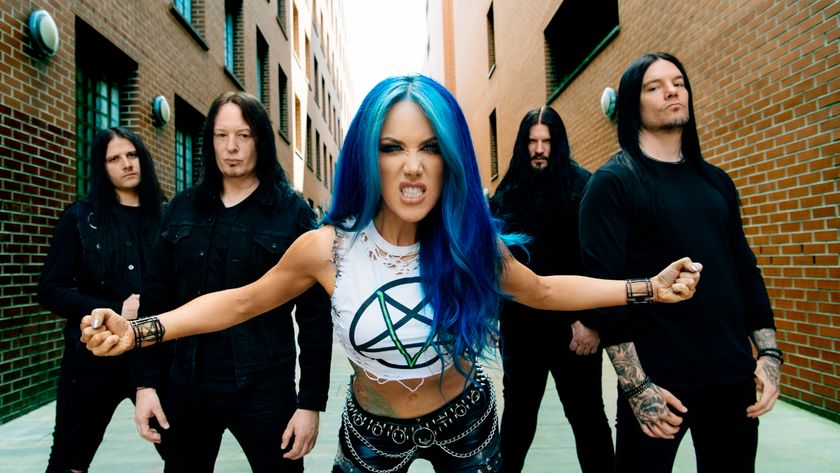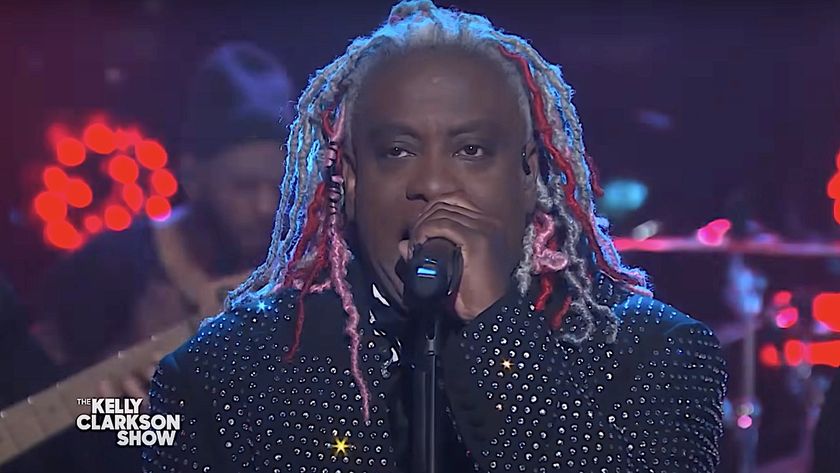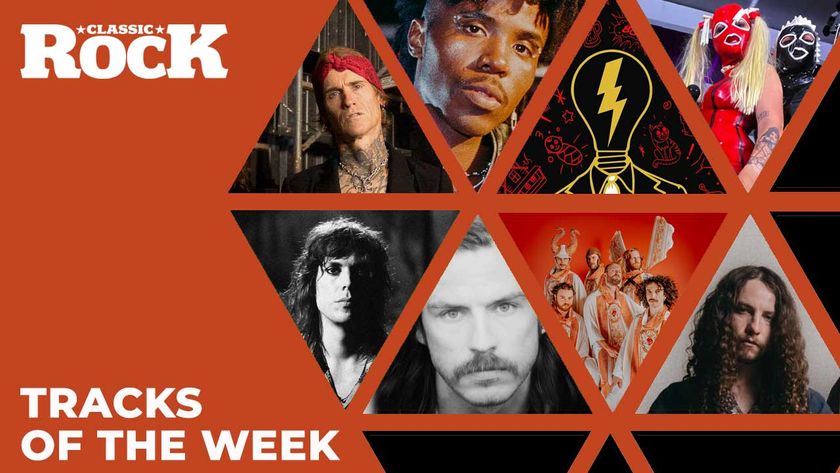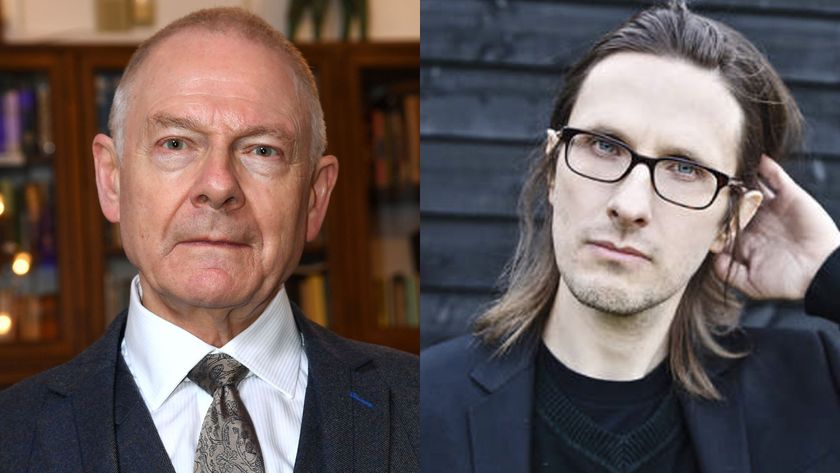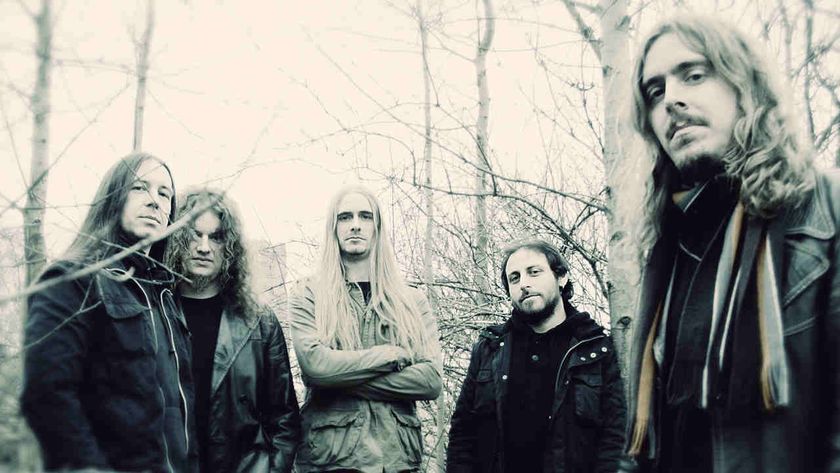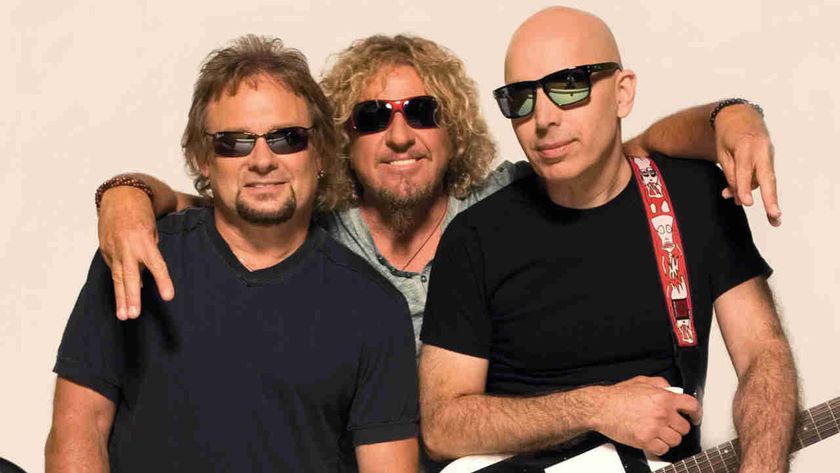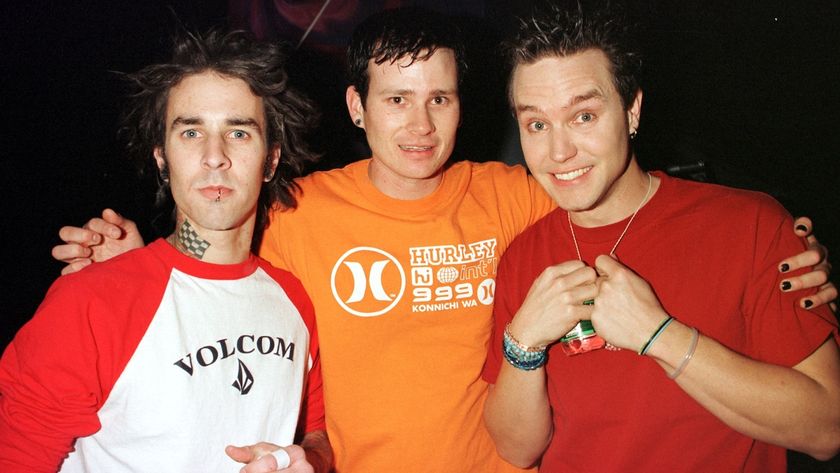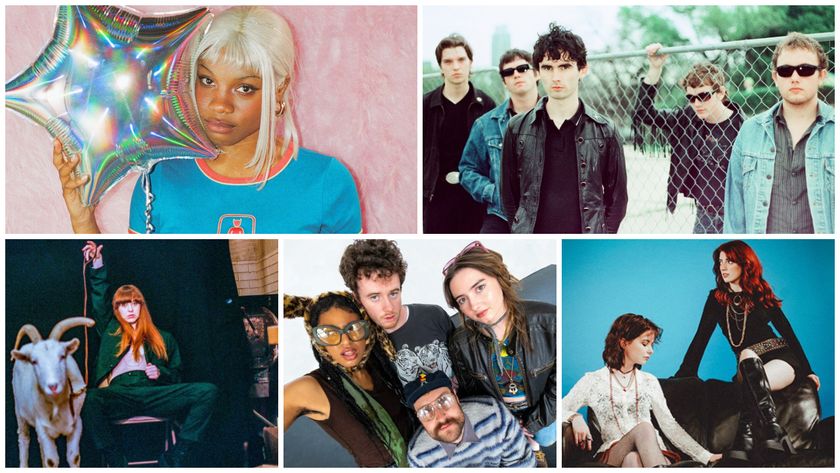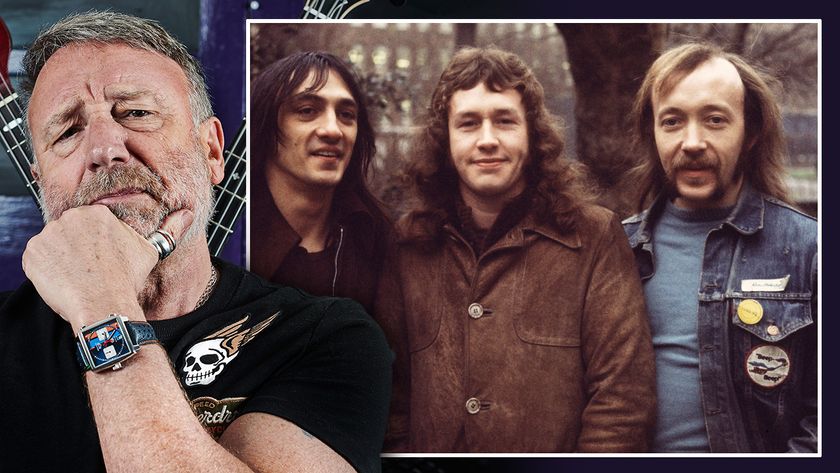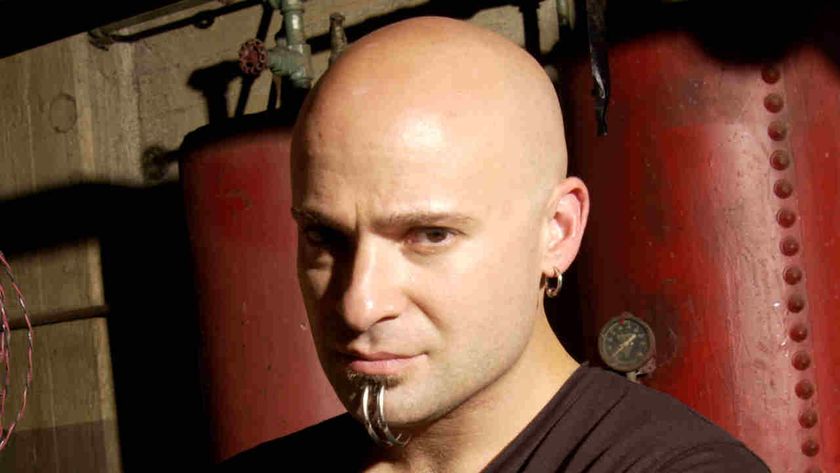When In The Shadows shot The Rasmus to international superstardom in 2003, they were already accustomed to life in the spotlight. Their first four albums, although not globally popular, had made them stars in their homeland of Finland, giving them full rein to spend their time writing music, chasing girls and doing all the things that young 20-somethings do when living freely on the road.
“In the beginning it was so crazy because we got so famous so fast,” recalls frontman Lauri Ylönen. “We’ve lived all our life in this kind of bubble. I’m still in that bubble.”
Despite enjoying the perks of their success, Lauri, an introvert, was unsure how to navigate the sudden lack of privacy and anonymity. “In Finland, everybody knew my face and it was sometimes not very nice to be that guy,” he says. “We started very young; I was in eighth grade when we put the band together. Since I was 15, we’d been very different from the normal guys – 95% of the guys were into soccer, and then there was us, who listened to Red Hot Chili Peppers and Nirvana.”
Red Hot Chili Peppers might not be an obvious influence, but they definitely inspired much of The Rasmus’s early career. Back then, their music was less serious, less gothic, and, as Lauri describes it, perhaps even “a little funky”. “I used to have white hair and wear a white feather,” he says. “It was pure and nice and clean. I’ve always had my looks follow my feelings.”
This sense of youthful playfulness could only get The Rasmus so far, however. By 2002 they still hadn’t broken out of Finland, and their formula clearly wasn’t working. Fortunately, this uncertainty pushed them to evolve. In The Shadows perfectly encapsulated a transitional period of Lauri’s life; from light into darkness in terms of aesthetic and themes, as the band adopted a more gothic outlook, and from the naivety of youth into the demands and obligations of adulthood.
“I felt like I was dealing with more pressure, dealing with more fame and starting to become more introverted,” explains the vocalist. “I was growing up and facing more in life. There were more responsibilities and all the boring adult stuff I had to deal with. I was getting more aware, and maybe being more afraid of things.”
One of the things Lauri dreaded most was impending national service in the Finnish army. A necessity for all adult men in Finland, to Lauri it was another obstacle that endangered his chances of doing what he loved.
“I just wanted to play music,” he explains. “Like I say in the lyrics: ‘I have to learn to kill before I can feel safe’, all these [feelings] that I was dealing with at that moment I put in the song.”
Thankfully, Lauri managed to avoid his call-up, instead keeping The Rasmus on the road, playing shows in Finland with goth rockers HIM. As he began to flirt with darker influences as a way of channelling his introversion, Him frontman Ville Valo was there to offer solace in the esoteric and consuming world of occultism, lending him books on witchcraft, magician Aleister Crowley and “other weird and mystical things”. It was a bottomless pool of inspiration, and worlds away from the superficiality of success; the perfect hiding spot for an introvert.
In The Shadows was born on the road and “started off as a jam”, explains Lauri. “We were soundchecking in Finland, and I was finishing my lunch as my bandmates were onstage. I was on a table on the other side of the hall, and the guys began playing the main riff, which made me begin to hum along in between bites of my sandwich.”
The song’s “annoying hook” became instantly embedded in Lauri’s mind, and when The Rasmus hit the studio to record what would be their fifth studio album, Dead Letters, it blossomed.
“I just fell in love with it,” he says. “The fact there’s a lot going on, but somehow it’s minimalistic, too.”
Despite Lauri’s initial fascination with In The Shadows, he wasn’t expecting it to be a hit.
“Actually, I wasn’t gonna put it out,” he admits. “I was thinking of other songs. It was the label’s decision to use it as the first single, so I just went with it and it happened to be released at the right time with other bands that were popular in the gothic pop/rock scene like Evanescence and My Chemical Romance.”
Dead Letters was The Rasmus’s first album to be licensed for release outside Finland and Sweden, after it was picked up by two music executives in Germany who thought it would be the next “big thing”. The album, which would define The Rasmus’s style for years to come, spread throughout the country like wildfire, and was propelled around the globe by its floor-filling lead single.
After its release in February 2003, In The Shadows made its way onto chart lists throughout Europe and Oceania, landing at No.3 in the UK, and even taking the top spot in New Zealand. Over time, it received six gold and two platinum awards, and sold a mammoth one million copies. It helped make Dead Letters an international phenomenon, changing Lauri and his bandmates’ lives forever. By the band’s own admission, the fame they had experienced previously was nothing compared to this.
“It was like we had 10 years of rehearsals in Finland, and now it was a million times more,” Lauri recalls. “It was crazy, and hard to keep our feet on the ground – especially because we were partying a lot.”
Most of Lauri’s memories of this time concern wild soirees, like the night he slept in a graveyard after staying up until the early hours at a party.
“We had a photoshoot the next day,” he offers by way of explanation. “It was supposed to be a sunrise shoot on a bridge in Stockholm, and I was like, ‘Oh, well, I’m just gonna go and party all night long and go straight to the photoshoot’, because I was already close to the place, but then I kind of felt tired and I decided to sleep in the graveyard. I was looking for thrill, putting myself in uncomfortable situations to get an experience.”
But perhaps the biggest thrill of all was that The Rasmus were no longer confined to Finland; they could now go wherever they wanted.
“All of a sudden we were able to play all over the world because of this one song,” Lauri says. “Anywhere we went, we had people waiting for us at the airport. That’s crazy and you can’t prepare for that.”
Life escalated. The parties were bigger, the tours were longer, and the fans were crazier. In fact, some fans were so infatuated with the band that there were even rivalries between different fan groups.
“Our Latin American fans would get jealous if we, for example, did something for the Argentinian fan club, like a special greeting or whatever. Some fans would go fucking mad and start practising black magic [on each other].”
Lauri’s social anxiety had also increased, leaving him again searching for something to curtail his nerves. A lifestyle of constant partying offered an effective yet temporary solution to this problem.
“It was cool, but also kind of dangerous,” he says. “I think I got used to that lifestyle too much. I saw it somehow as a kind of shield. But now I’ve been sober 14 years already, and it’s better for me. Back then it was wild, and we all had moments where we got to be rock stars.”
In The Shadows was such a success that it even had four music videos – the European (Crow) version, the Finnish (Bandit) version, the American (Mirror) version, and a fourth performance version. Possibly its most well-known video is the Mirror edition, which saw the band perform inside a gothic mansion, with Lauri donning his trademark black feathers.
“We actually did the video in Romania,” he recalls. “It was cool because we had all these Romanian fans there and they were all dressed up, and we spent one long night in this cold mansion together. The feeling was kind of creepy in that building because it was cold and haunted.”
Almost 20 years since In The Shadows sent the world into a frenzy of gothic pop and feathered hair-dos, Lauri is still as in love with the track as he was when he first heard it, and it’ll never leave their setlists.
“It’s still a big song, and every time we play it, it has a massive effect on people. Whenever I hear it on the radio, it encourages me to try to be original, as the song is so strange, which is good. It’s a reminder to strive to find your own sound and voice, instead of being like all the others. It still inspires me now.”
